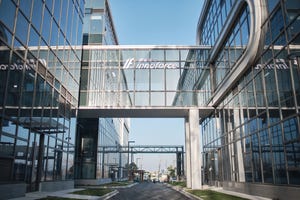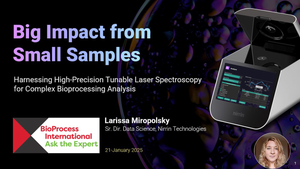
Identifying the REMEDI to problems in stem-cell researchIdentifying the REMEDI to problems in stem-cell research
An expert from Ireland’s Regenerative Medicine Institute (REMEDI), touts standardized manufacturing and new release criteria at the Cell & Gene Therapy International Europe in Dublin, Ireland.
January 24, 2025

The idea of using stem cells – cells that can differentiate and have immunomodulatory properties – to replenish and repair damaged tissues has existed for decades. But in recent years, interest has soared with regenerative medicine firms spending billions to develop candidate stem-cell–based therapies.
Despite that, such therapies have shown inconsistent results in clinical trials according to Frank Barry from Ireland’s Regenerative Medicine Institute (REMEDI), who contrasted a successful 2021 study of a candidate back-pain therapy with a similar failed clinical trial by his own group.
The two trials had used identical conditions to test mesenchymal stem cells isolated from bone marrow. “Why do we end up with quite a different outcome in each case?” he asked delegates at December 2024's Cell & Gene Therapy International Europe. “The problem relates to poor manufacturing standards, inconsistent protocols, and the use of individualized, rather than internationally standardized, methods.”
Identifying inconsistency
Although there is no standard protocol for stem-cell cultivation, there are common steps that scientists follow. Typically, cells collected from a tissue of origin are plated-out and then cultured in a growth medium. When the culture reaches the target density, the cells are harvested and cryopreserved.
Barry identified one major inconsistency in process control. ”At each step there are quality control (QC) systems which are supposed to be predictive of quality and able to distinguish between good and bad cells.” He added, “I think it is in QC that the greatest vulnerability has arisen.”
But other inconsistencies also persist. Researchers from REMEDI analyzed manufacturing processes used in stem-cell–therapy studies and identified common sources of variation – everything from variability of the source tissue to differences in media formulation.
Barry said that people are performing different techniques when they isolate cells, but all are calling them mesenchymal stem cells. “They are claiming they are producing an identical product, but they are using manufacturing systems which are incredibly inconsistent.”
“So, we concluded each of these variables has a strong influence on the biological properties of the cells produced. And that means, at the end of the day in clinical trials, we are never comparing apples with apples.” He added, “There is no standard international protocol for stem-cell cultivation and this variability has led to manufacturing vulnerability, which has led to the clinical trial variability.”
Media impact
To illustrate his point, Barry and his colleagues discussed the impact that variations in media composition have on stem-cell products, evaluating five commercially available formulations in a standardized manufacturing set-up.
He said, “We took bone marrow stem cells from three donors, expanded them under identical conditions using the same bioreactor configuration in the same cell-culture suite, all done by the same operator, all with the same conditions, except for the media formulation.
“If you vary the media composition and keep everything else constant, the biological properties of the cells that emerge are dramatically different.” He added, “The therapeutic profile of the cells changes greatly depending on the media environment in which they're grown.”
Release testing
In contrast with manufacturing, release-testing protocols – the safety assessments stem cell-based therapies must pass - are more uniform. For example, mesenchymal stem cells need to be plastic adherent, express CD-105, CD-73, and CD-90 and be negative for hematopoietic markers.
However, using standard tests for cells made using non-standardized protocols is problematic according to Barry, who again cited his team’s work with the five formulations his team evaluated.
“The cells are quite different biologically. They differ in their differentiation ability, surface phenotype expression, and in immunomodulatory activity, but they are all identical according to these release criteria.
“At the end of the day, the problem has led to these inconsistent clinical-trial results.”
Solutions
Achieving greater consistency in stem-cell–therapy trials depends on redefining release criteria and creating standardized manufacturing processes, Barry said. He said that the fully-closed, robotic system developed by REMEDI with the Fraunhofer Institute seeks to help scientists reach that goal.
“If we change the release criteria we've been using and stop thinking that those markers are effective, then it might be possible to do things in a better way.”
About the Author
You May Also Like





